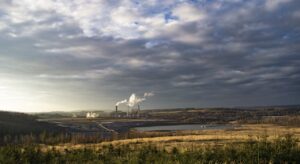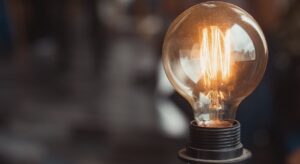Would you buy a house without working outlets? We have become dependent on electricity for many of our daily activities. When outages occur, we feel the effects of this dependence and then feel relieved when the electricity comes back on.
Electricity has helped us stay healthier, work more efficiently, and live 24/7. Because electricity has had such a positive impact on our lives, scientists and industry researchers are constantly finding ways to provide electricity more easily and inexpensively. As a result, innovations in electricity have made the industry cleaner and more efficient throughout its history and made electricity available to millions of homes.
This article includes the top five choices from these innovations. We’ll look at technologies focused on specific energy resources and check out the key components that give you access to those resources. First, let’s look at the current innovation of a long-used renewable resource.
5: Wind Turbines.
For thousands of years, people have used the power of wind to accomplish tasks. For example, merchants once relied on the wind to sail around the world. In addition, old windmills that were once used to grind cereals are an iconic part of the landscape in Holland. As our lives center around electricity, modern scientists have found innovative ways to convert the kinetic energy of wind into electricity.
4: Hydroelectric dams
Hydroelectric dams are the oldest technological innovation in our countdown. In the early 1900s, hydroelectric dams accounted for 40 percent of the electricity consumed in the United States. Today, hydropower accounts for almost a quarter of all electricity consumed in the world. In addition, according to the U.S. Bureau of Reclamation, the physical structures themselves are wonders of human engineering and construction, attracting photographers and tourists.
Hydroelectric dams work by holding huge amounts of water and allowing a limited amount of water to pass through the dam. The water pressure created by restricting this flow is enormous, and hydroelectric power plants use this pressure to spin turbines attached to electric generators. As with wind turbines, the electricity generated by the hydroelectric dam is added to the electric grid associated with the geographic location of the dam.
Nanogenerators: harnessing internal force
While the movement of wind and water can power many homes, nanogenerators use the movement of your body to generate electricity on a smaller scale. Nanogenerators are tiny devices with piezoelectric material, meaning the material creates an electric current simply by bending or stretching it. This force can come from subtle movements, such as the heartbeat or the expansion and contraction of the lungs. Eventually, nanogenerators could be used to power pacemakers, eliminating the need for repeated operations when batteries fail.
3: Solar cells
While wind and water can be used to generate energy through motion, the sun provides a significant amount of energy in the form of heat and light. Solar cell technology, called photovoltaic (PV) cells, converts this light into electricity . These photovoltaic cells contain semiconductor materials such as silicon. Electrons in the semiconductor move when the material absorbs light.
2: Nuclear Reactors.
Nuclear fission is the process of an atom breaking apart with the release of energy holding the atom together. In the 1950s, nuclear fission of the radioactive isotope uranium-235 made energy cheaper and more efficient to produce. A nuclear reactor is the structure that produces this fission process from uranium-235. Nuclear power plants include one or more reactors as well as large and complex cooling and containment mechanisms.
1: Electric Grids.
The grid itself tops our list of innovations. When people say “grid,” they mean a network of electricity sources covering a certain geographic area. Some grids are connected to other grids to share resources in case of an emergency. Most people who use a power source are connected to the existing grid through power lines.
The grid is a massive electrical infrastructure consisting of transmission lines, power plants, substations, and transformers. The grid in the United States is controlled by both public and private entities. Public entities are state and federal bureaucracies that enforce the laws governing the industry.


